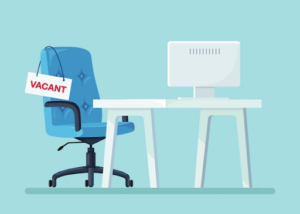Just like the rest of the United States, Arlington is in a labor shortage. At the pandemic’s peak, more than 120,000 businesses nationwide closed, leaving over 30 million people unemployed. As businesses began to reopen in 2021, 3.8 million job positions opened, but people had already started leaving the workforce in droves. The U.S. Chamber President and CEO said, “The worker shortage is real, and it’s getting worse by the day.”

Where did the workers go?
The answer doesn’t point to just one reason or a particular group. Instead, a combination of factors led to this unprecedented labor shortage.
One of these factors are the three million adults, aged 55 and older, previously in the workforce who decided to retire early when COVID-19 began to spread. These open positions are hard to fill due to a lack of industry training in the current workforce.
Another contribution to the shortage is the absence of affordable and accessible childcare. At the start of the pandemic, 370,600 childcare jobs were lost. 95% of those jobs were held by women, leaving many women without jobs. It also means that childcare facilities started to scale down or close altogether, resulting in caretakers from all industries resigning to watch over their child(ren). The percentage of working moms in 2021 went from 70% to 55%. Those numbers are starting to steadily increase but not at a significant rate.
Lastly, one of the most significant factors is “The Great Resignation.” In May 2022, over 4.2 million workers quit jobs in search of better opportunities, better pay and a better work/life balance. Many workers faced burnout and quit in order to search for a job that better suited their goals. Employers saw an unprecedented amount of people leave their jobs during this time, so much so that #QuitTok began trending on social media.

Where do we go from here?
The best way to address the labor shortage is by implementing solutions to attract and retain workers. We have provided some potential ways to do this below.
1. Allow for work-life balance
With the pandemic causing many workers to switch to working remotely, working in the office can seem unnecessary; 91% of workers wished to continue some hours remotely. If possible, allowing workers the flexibility to work a hybrid schedule could attract new hires and allow caregivers the balance they need. Other ways to improve work-life balance include allowing for flexible work schedules and providing team bonding activities.

2. Help employees gain access to childcare
With a large sum of the workforce leaving due to a lack of childcare, workers are searching for accessible and affordable care. Employers who can aid in the search for public subsidies, offer in-office childcare, or provide a child care stipend will help to bridge the gap for working parents.

3. Increase compensation
While it may not be possible for all employers, a great solution to the labor shortage is raising wages to a level that offsets losses from public benefits. Businesses could also research the area and then provide salaries that allow employees to afford the cost of living in their community.
4. Provide a solid company culture
According to Forbes, developing company culture means giving employees the necessary resources, fostering a collaborative environment, and providing growth opportunities. These are essential qualities to new hires in search of a better work environment.
5. Help Continue education
A problem companies have when trying to hire is a lack of employees with the necessary trade skills. For instance, Eight million workers don’t have a college degree and fear that they will be underqualified for the jobs they want. The simplest solution is to utilize these potential employees by providing technical training for in-demand skills.

The lack of workers is not a problem that can be solved overnight, but with the right plan, it is possible to steadily fill the gaps.
If you are interested in learning more, the U.S Chamber has extensively researched and created the America Works Initiative. Learn more at https://www.uschamber.com/major-initiative/america-works-initiative.
Written by Chase Fowler
